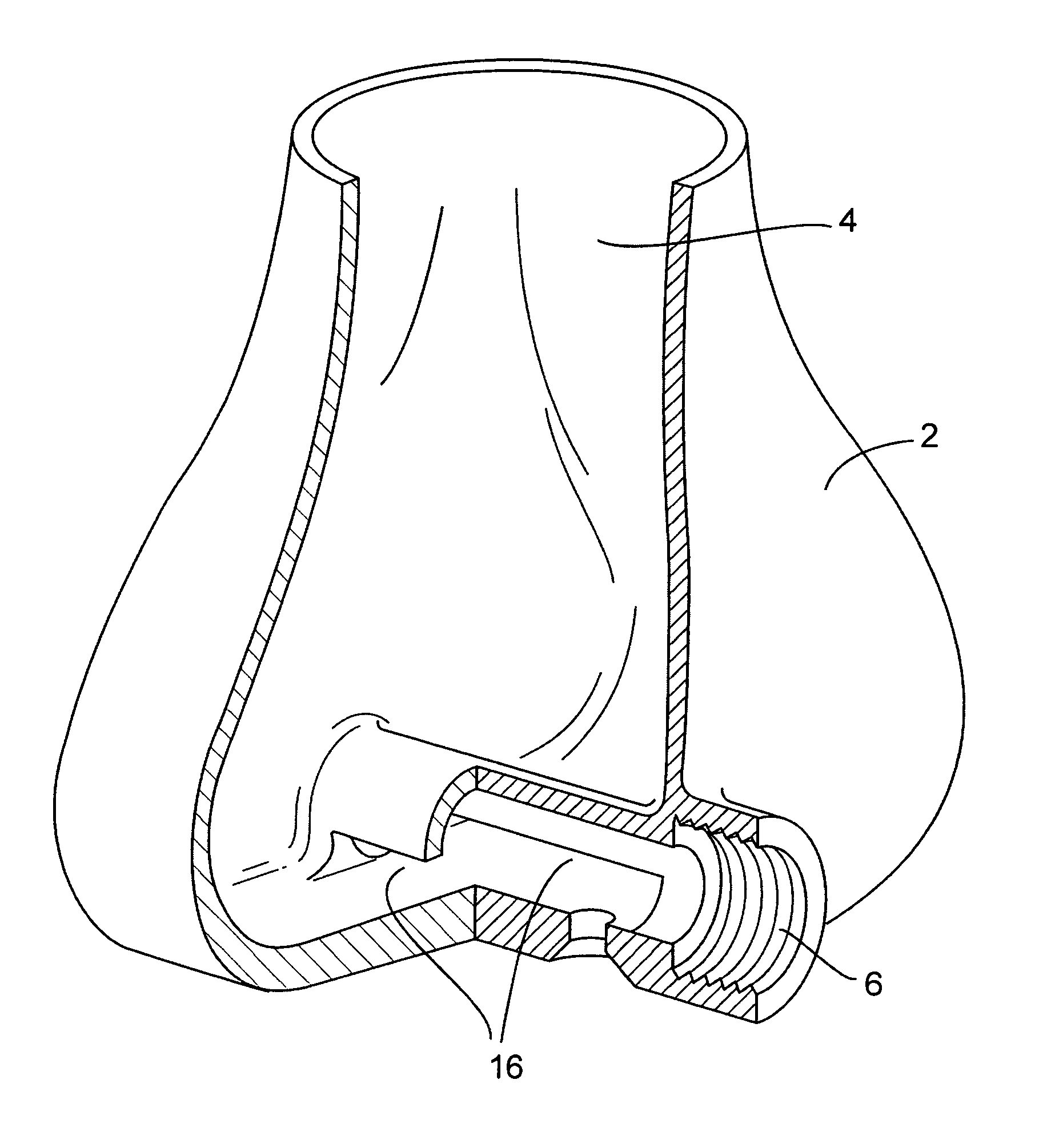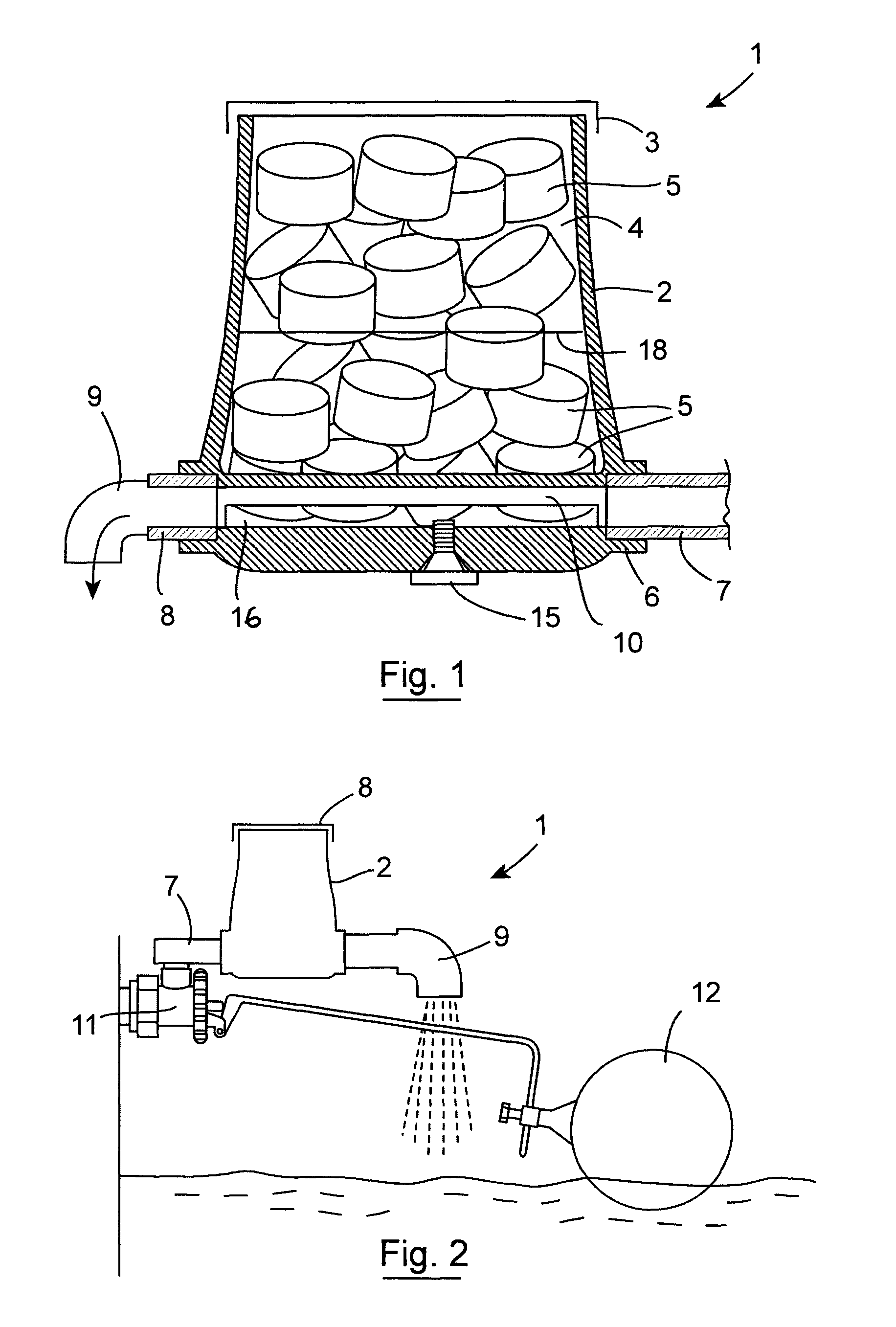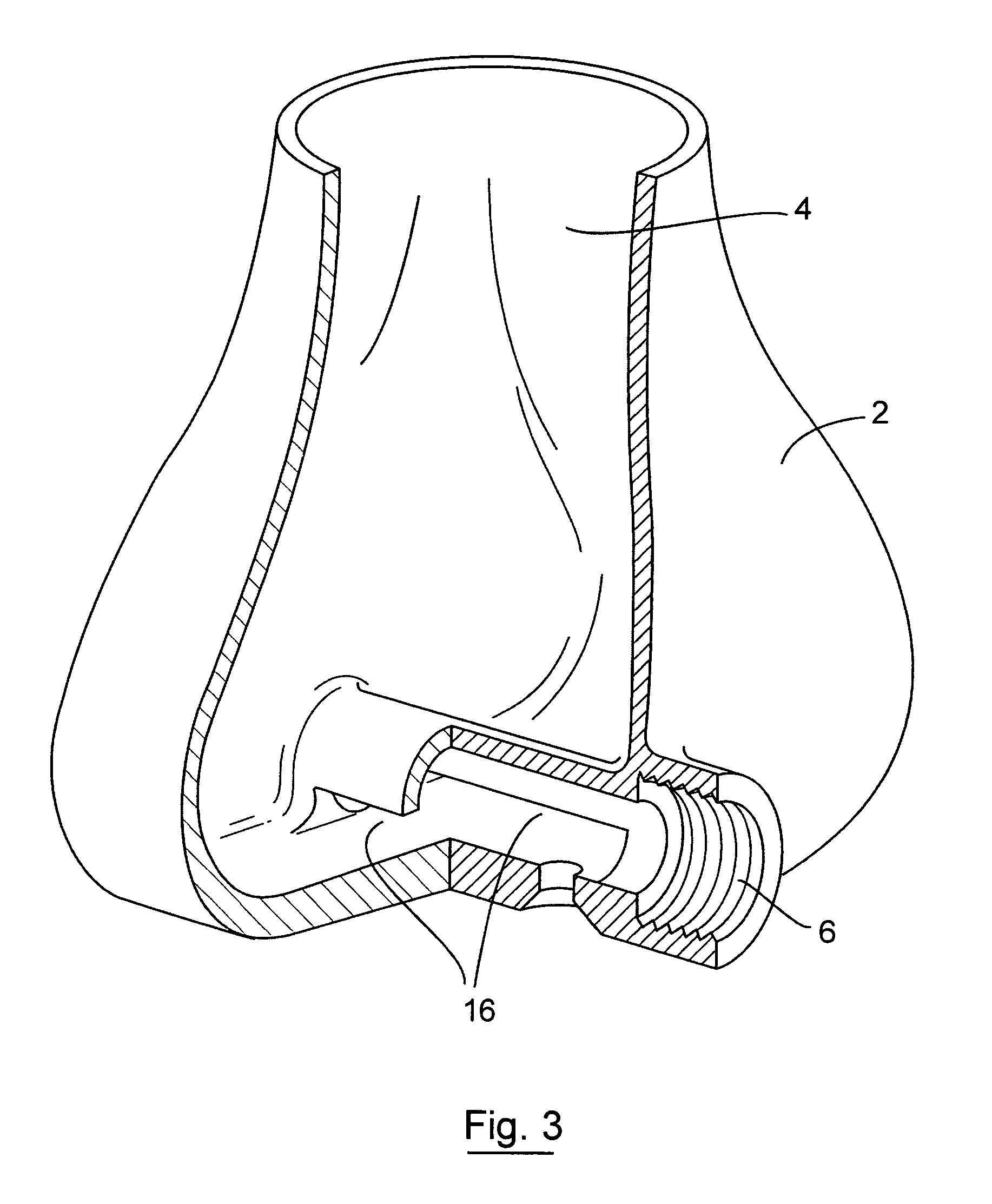Chlorination device
a chlorination device and chlorination technology, applied in the direction of dissolving, other chemical processes, separation processes, etc., can solve the problems of chlorination source degradation, insufficient amount of disinfectant, and unsafe drinking water supply of contaminated water
- Summary
- Abstract
- Description
- Claims
- Application Information
AI Technical Summary
Benefits of technology
Problems solved by technology
Method used
Image
Examples
example 1
[0062]The device shown in FIG. 3 was moulded from a nylon type material using selective laser sintering. The overall size is approximately 100 mm across by 50 mm long by 100 mm high. The passage 10 through the device is 12 mm in diameter and ends are machined out and threaded with ½″ BSP Thread. There is a slot 11 5 mm high at the bottom of this pipe 10 which allows water to flow into the chamber 4. ½″ ID piping 7 can be connected to the inlet 6. The outlet 8 is also threaded with ½″ BSP and is fitted with a ½″ to ¾″ expanding nipple with ¾″ bend 9 attached and pointing downwards. The hole in the bottom of the device is threaded with M8 threads and is fitted with a stainless steel M8 screw 15 of suitable length such as 16 mm.
[0063]The device is first operated without tablets 5 and the depth of water is measured in the device. Screw lengths of 12 mm or 16 mm are used to set a depth of around 30 mm for maximum flow of 1000 L / hour. Once set tablets 5 are added to the chamber 4. Even wh...
example 2
[0064]The device of Example 1 is attached to the outlet of ballcock valve shown in FIG. 2. The ballcock valve (Beta BS1212 from Beta Ballvalves Ltd, Wolverhampton, England) discharges upwards. A right angled custom part is threaded at the inlet with M12×1 thread of the ball valve to ½″ BSP. The ballvalve with attached device is mounted in a tank much like that used as a gravity reservoir in household and farm water systems. The device is set up much as in Example 1. However, maximum flow rates through the orifice of the ballvalve are slower than in example 1. Nevertheless, when set up and filled with tablets as outlined in example 1 the amount of chlorine added to the water remains in the range 3-5 ppm no matter how much water is flowing though the ball valve.
[0065]Referring to FIGS. 4 to 15, there is illustrated another unpressurised chlorination device 20 according to the invention. Parts similar to those identified with reference to FIGS. 1 to 3 are assigned the same reference nu...
PUM
| Property | Measurement | Unit |
|---|---|---|
| angle | aaaaa | aaaaa |
| size | aaaaa | aaaaa |
| size | aaaaa | aaaaa |
Abstract
Description
Claims
Application Information
 Login to View More
Login to View More - R&D
- Intellectual Property
- Life Sciences
- Materials
- Tech Scout
- Unparalleled Data Quality
- Higher Quality Content
- 60% Fewer Hallucinations
Browse by: Latest US Patents, China's latest patents, Technical Efficacy Thesaurus, Application Domain, Technology Topic, Popular Technical Reports.
© 2025 PatSnap. All rights reserved.Legal|Privacy policy|Modern Slavery Act Transparency Statement|Sitemap|About US| Contact US: help@patsnap.com



